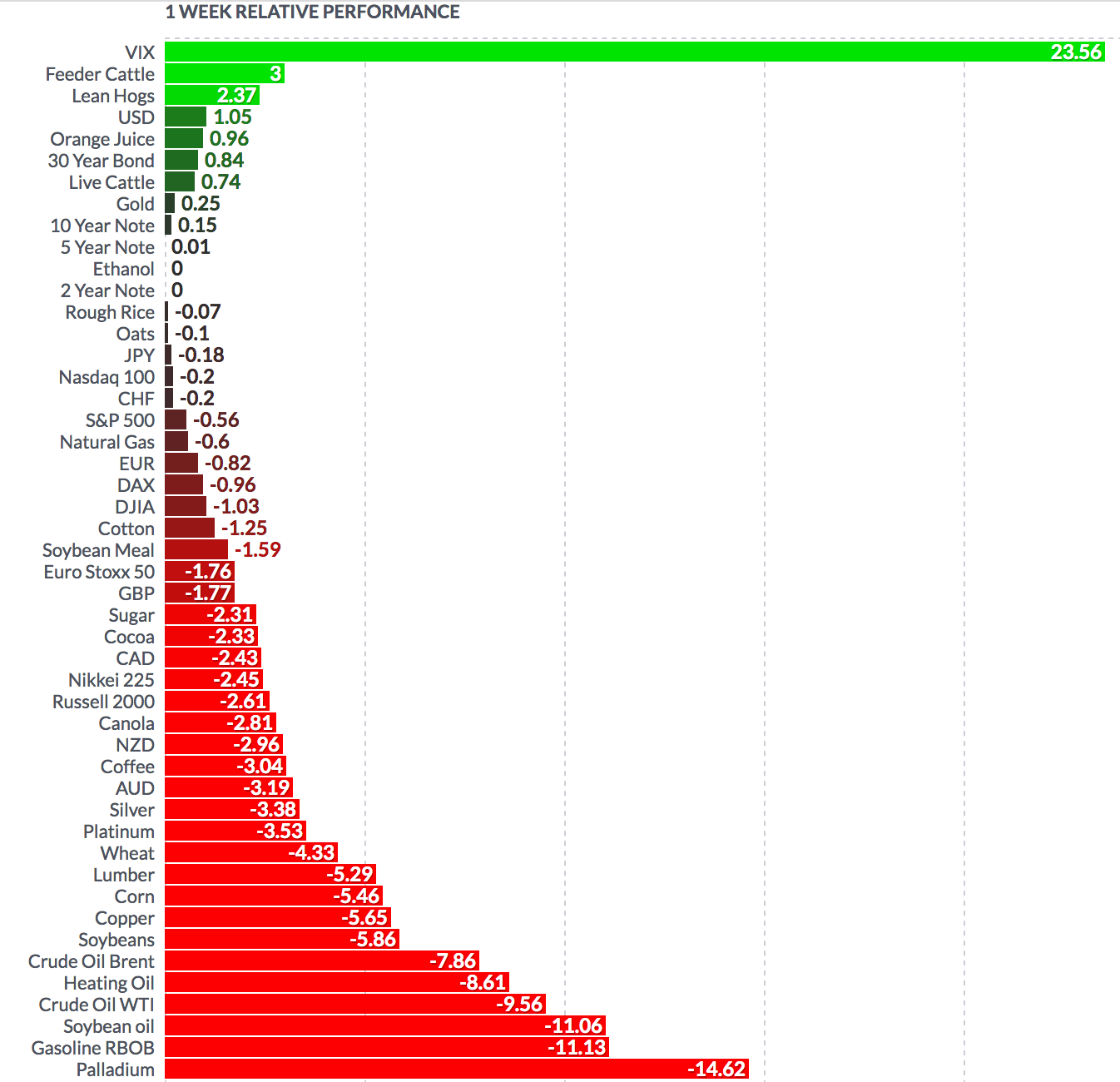Market Indexes
All 4 indexes fell this week, with the Russell small caps falling the most, down -2.54%.
“The account of the Fed’s July 27-28 meeting showed Fed officials largely expect that later this year they will reduce the central bank’s emergency monthly purchases of $120 billion of Treasury bonds and mortgage-backed securities.
"But consensus on other key issues appeared elusive, including the start date and pace of the bond-buying “taper,” and whether the bigger risk to the recovery is posed by inflation, ongoing joblessness, or the lurking chance that a resurgent coronavirus may throw things into reverse.
"As policymakers weighed recent spikes in prices against the value of being “patient” with monetary policy so more hiring could take place, they also noted “the risks that rising COVID-19 cases associated with the spread of the Delta variant could cause delays in returning to work and school, and dampen the economic recovery.” (Reuters)
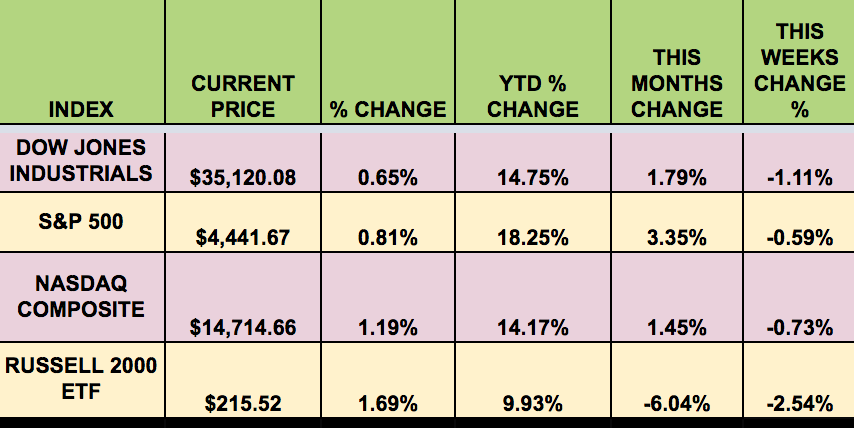
Volatility: The VIX rose 20% last week, ending the week at $18.56.
High Dividend Stocks: These high dividend stocks go ex-dividend this week: Main Street Capital Corporation (NYSE:MAIN), Prospect Capital Corporation (NASDAQ:PSEC), and Lumen Technologies Inc (NYSE:LUMN).
Market Breadth: 11 out of 30 DOW stocks rose last week, vs. 23 the week before last. 34% of the S&P 500 rose, vs. 66% the previous week.
FOREX: The US $ rose vs. other major currencies, sending commodities lower, on news of possible earlier Fed tapering, and potential threats to the economic recovery stemming from rising Delta variant cases.
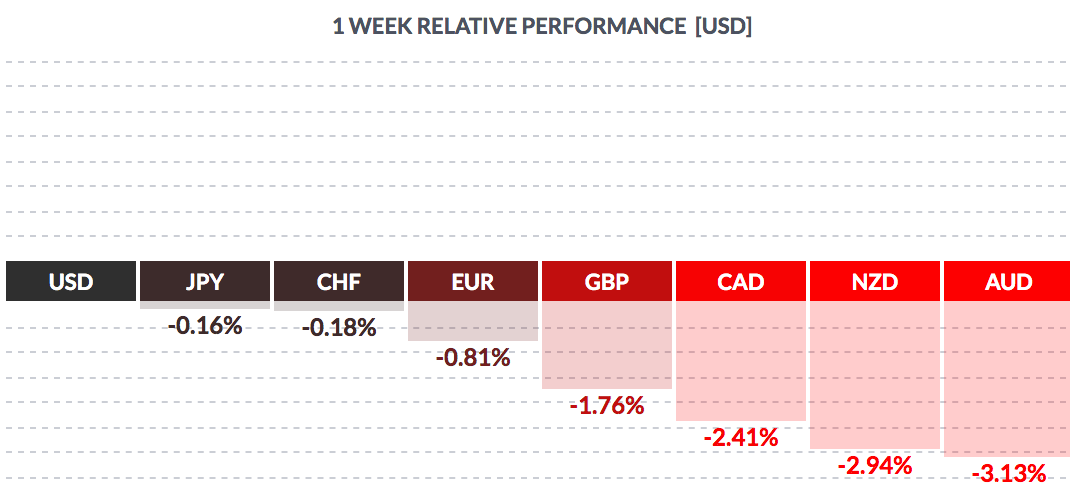
Economic News
“China’s July retail sales, industrial production and fixed asset investment were all weaker than expected as the latest COVID-19 outbreak weighed on the world’s second-biggest economy. Industrial production in the world’s second largest economy increased 6.4% year-on-year in July, data from the National Bureau of Statistics (NBS) showed on Monday. Analysts had expected output to rise 7.8% after growing 8.3% in June.
Retail sales increased 8.5% in July from a year ago, far lower than the forecast 11.5% rise and June’s 12.1% uptick. China’s economy has rebounded to its pre-pandemic growth levels, but the expansion is losing steam as businesses grapple with higher costs and supply bottlenecks. New COVID-19 infections in July also led to fresh restrictions, disrupting the country’s factory output already hit by severe weather this summer.” (Reuters)
“U.S. homebuilder confidence in the market for single-family homes fell in August to its lowest reading in 13 months, driven by higher construction costs and supply shortages. The NAHB/Wells Fargo Housing Market index declined 5 points to a reading of 75 this month, its lowest level since July 2020, from 80 in July. Economists polled by Reuters had expected the index to remain unchanged from the month prior.
"However, a reading above 50 means more builders view market conditions as favorable than poor. The index hit an all-time high of 90 in November 2020. Surging home prices and limited supply has put a lid on home sales throughout this year. Consequently, fewer U.S. consumers believe that now is a good time to purchase a home.” (Reuters)
“U.S. business inventories increased strongly in June, though raw material shortages continue to frustrate efforts by motor vehicle retailers to restock. Business inventories rose 0.8% after advancing 0.6% in May, the Commerce Department said on Tuesday. Inventories are a key component of gross domestic product. June’s increase was in line with economists’ expectations. Inventories increased 6.6% on a year-on-year basis in June.” (Reuters)
“Housing starts dropped 7.0% to a seasonally adjusted annual rate of 1.534 million units last month. Data for June was revised up to a rate of 1.650 million units from the previously reported 1.643 million units. Homebuilding fell in the Northeast, Midwest and West, but rose in the populous South. Economists polled by Reuters had forecast starts would fall to a rate of 1.600 million units. Starts increased 2.5% on a year-on-year basis in July.
"Single-family starts, which account for the largest share of the housing market, fell 4.5% to a rate of 1.111 million units. Starts for the multi-family segment tumbled 13.1% to a rate of 423,000 units. Permits for future homebuilding rose 2.6% to a rate of 1.635 million units in July. Single-family permits fell 1.7% to a rate of 1.048 million units. Permits for multi-family housing projects jumped 11.2% to a rate of 587,000 units.” (Reuters)
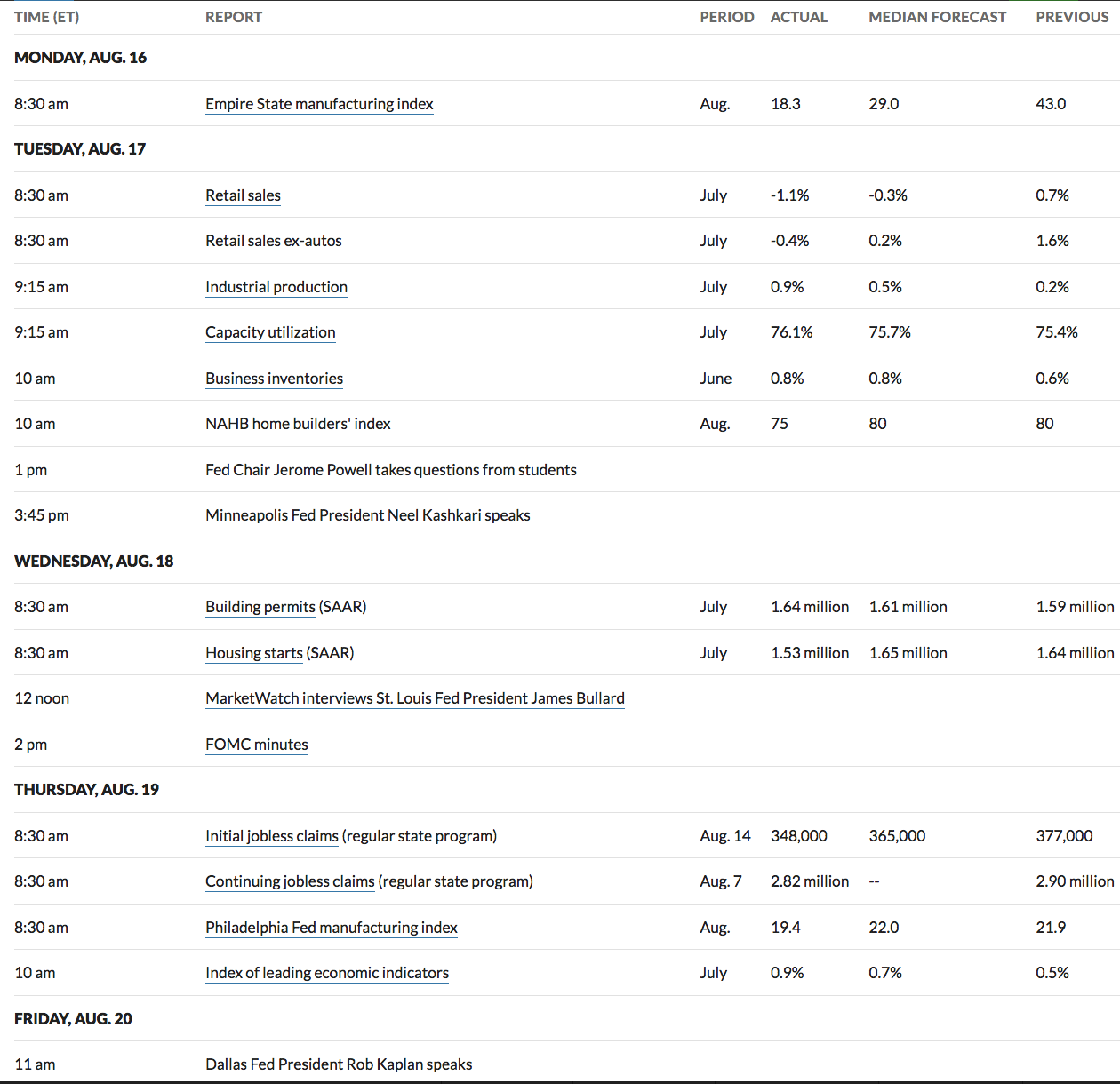
Week Ahead Highlights
“The Fed is likely to dominate the economic conversation next week as well with an annual meeting of central bankers at Jackson Hole, Wyoming. Markets will be watching for any clearer indication on plans for a Fed taper of monthly bond purchases, which minutes showed officials believed would happen this year if the economy recovers as expected. Fed Chairman Jerome Powell will deliver remarks on the economic outlook next Friday.” (Reuters)
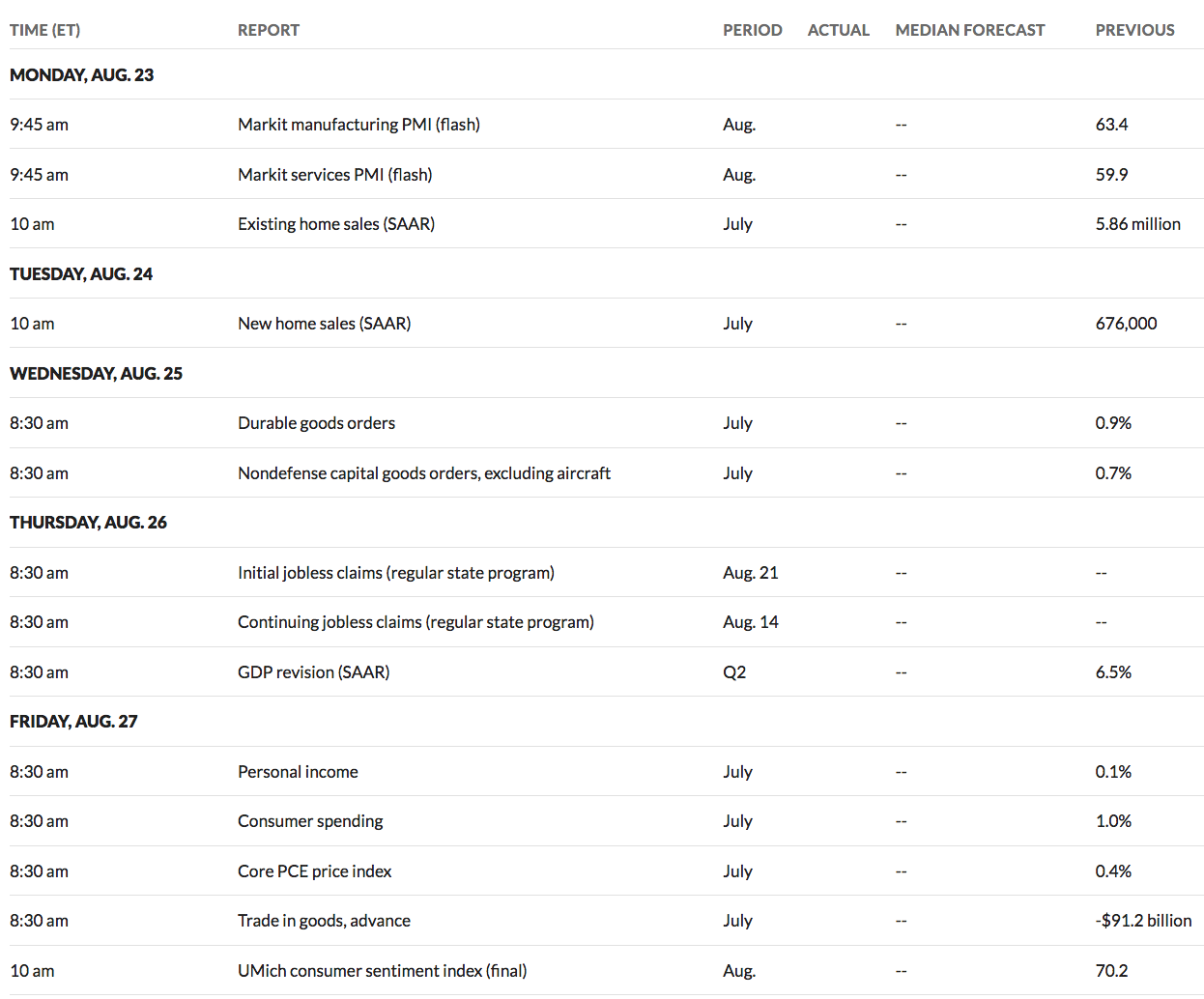
Sectors: Healthcare led the week, with the Energy sector lagging.
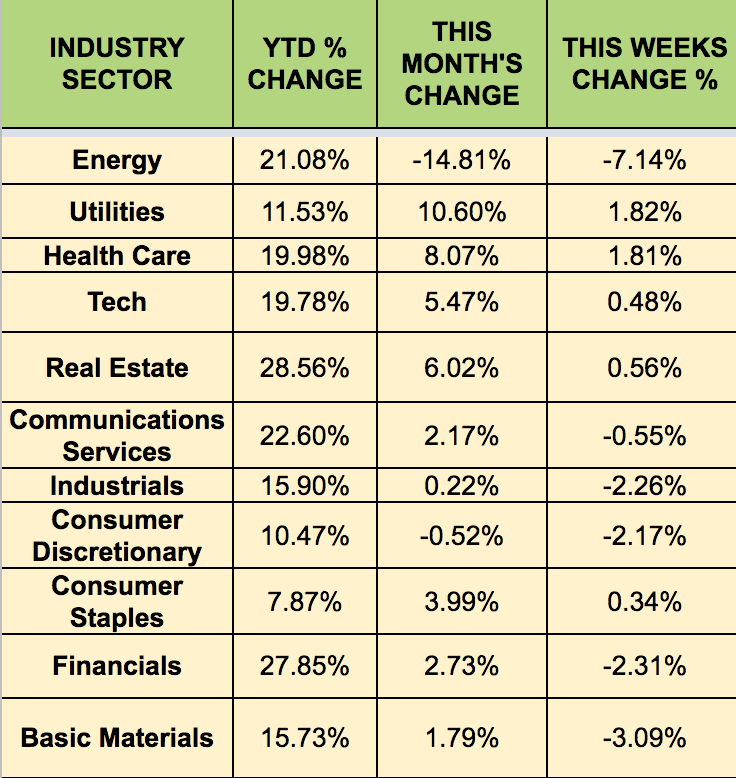
Futures: WTI crude fell -.37%, basically flat, ending at $68.03.
